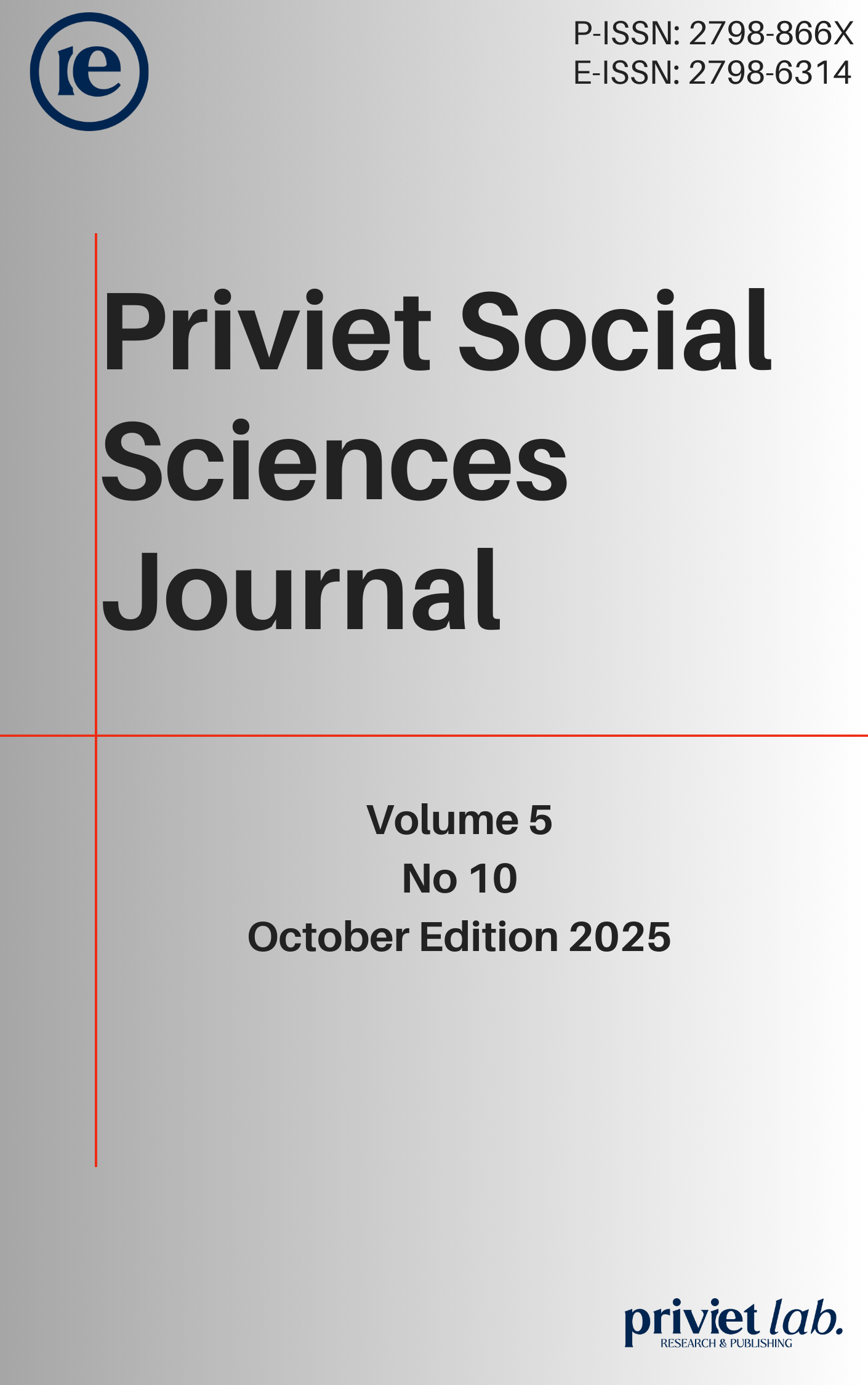Brand localization and consumer perception in China: A pavlovian conditioning approach
DOI:
https://doi.org/10.55942/pssj.v5i10.804Keywords:
Brand localization, Pavlovian conditioning, consumer perception, marketing strategy, ChinaAbstract
Globalization has driven international companies to adapt their brand strategies to local markets, particularly in China, which has become one of the world’s largest and most dynamic economies. One crucial aspect of this adaptation is brand name localization, where international brands translate their names into Mandarin to ensure linguistic familiarity, cultural relevance, and positive perceptions. This study examines consumer perceptions of localized brand names—Burger King (汉堡王), KFC (肯德基), and Starbucks (星巴克)—by integrating the theoretical perspective of Pavlovian conditioning with international marketing strategies. A survey of 500 respondents was conducted to measure consumer attitudes toward dimensions such as memorability, cultural appropriateness, emotional resonance, and the influence on purchase decisions. The findings indicate that local brand names significantly shape consumer perceptions and purchasing behavior. Starbucks (星巴克) was perceived as the most successful brand name, associated with coffee culture, a premium lifestyle, and ease of recall. KFC (肯德基) was found to evoke positive emotions strongly, while Burger King (汉堡王) was more likely to trigger curiosity rather than a strong cultural association with Western fast food. Repetition of brand names also enhances positive consumer emotions, aligning with Pavlovian conditioning, where repeated stimuli strengthen affective responses. This study contributes to the understanding of brand localization as a strategic marketing tool in cross-cultural contexts. The results highlight the importance of phonological adaptation, cultural alignment, and consistent brand communication in building consumer trust and loyalty in international markets, particularly in China.
References
Chao, P., & Lin, S. (2017). Translating brand names effectively: Brand attitude reversal and perceived brand name translation relevance in an emerging market. Journal of International Consumer Marketing, 29(3), 120-134. https://doi.org/10.1080/08961530.2017.1281784
Cui, Y. (2018). The presentation of brand personality in English-Chinese brand name translation. International Journal of Market Research, 60(1), 33-49.
Chinese study using mixed methods on satisfaction with basic medical insurance for urban and rural residents (Mixed-methods research on satisfaction with basic medical insurance for urban and rural residents in China). (2020). BMC Public Health, 20, Article 920. https://doi.org/10.1186/s12889-020-09277-1
Consumer perceived value preferences for mobile marketing in China: A mixed method approach. (2018). Journal of Business Research, 92, 448-459. https://doi.org/10.1016/j.jbusres.2018.01.011
Cui, G., & Liu, Q. (2001). Executive insights: Emerging market segments in a transitional economy: A study of urban consumers in China. Journal of International Marketing, 9(1), 84–106. https://doi.org/10.1509/jimk.9.1.84.19835
Diantanti, NP. Dkk. PERBANDINGAN PENGGUNAAN LOCAL-NAME BRAND DAN FORE IGN-NAME BRAND PADA PRODUK FASHION DI KOTA MALANG.2018. J. Jurnal Bisnis dan Manajemen Vol. 5 No.1. e-ISSN : 2581-1584.
Hong, F. C., Pecotich, A., & Shultz, C. J. (2002). Brand name translation: Language constraints, product attributes and consumer perceptions in East and Southeast Asia. Journal of International Marketing, 24(1), 71-89. https://doi.org/10.1509/jimk.10.3.72.19548
Kotabe, M., & Helsen, K. (2020). Global marketing management (8th ed.). Wiley.
Solomon, M. R., Marshall, G. W., & Stuart, E. W. (2018). Marketing: Real people, real choices (9th ed.). Pearson.
Keller, K. L. (2001). Building customer-based brand equity: A blueprint for creating strong brands. Marketing Science Institute Working Paper Series, 01-107.
Liu, J. (2017). Linguistic strategies for Western cosmetic brand translation in China. International Journal of Business and Management, 12(11), 164-176. https://doi.org/10.5539/ijbm.v12n11p164
Priyono, Dr. (2008). Metode Penelitian Kuantitatif. Sidoarjo: Zifatama Publishing. 12. Sugiyono. (2016). Metode Penelitian Kuantitatif, Kualitatif, dan R&D. Bandung: Alfabeta.
Sound symbolism effects across languages: Implications for global brand names. (2012). International Journal of Research in Marketing, 29(3), 275-279. https://doi.org/10.1016/j.ijresmar.2012.03.002
Sugiyono. (2016). Metode Penelitian Kuantitatif, Kualitatif, dan R&D. Bandung: Alfabeta.
Downloads
Published
How to Cite
Issue
Section
License
Copyright (c) 2025 Sheyla Silvia Siregar, Agung Krisnamurti Prabumeang, Dewi Agustin Pratamasari

This work is licensed under a Creative Commons Attribution 4.0 International License.

















